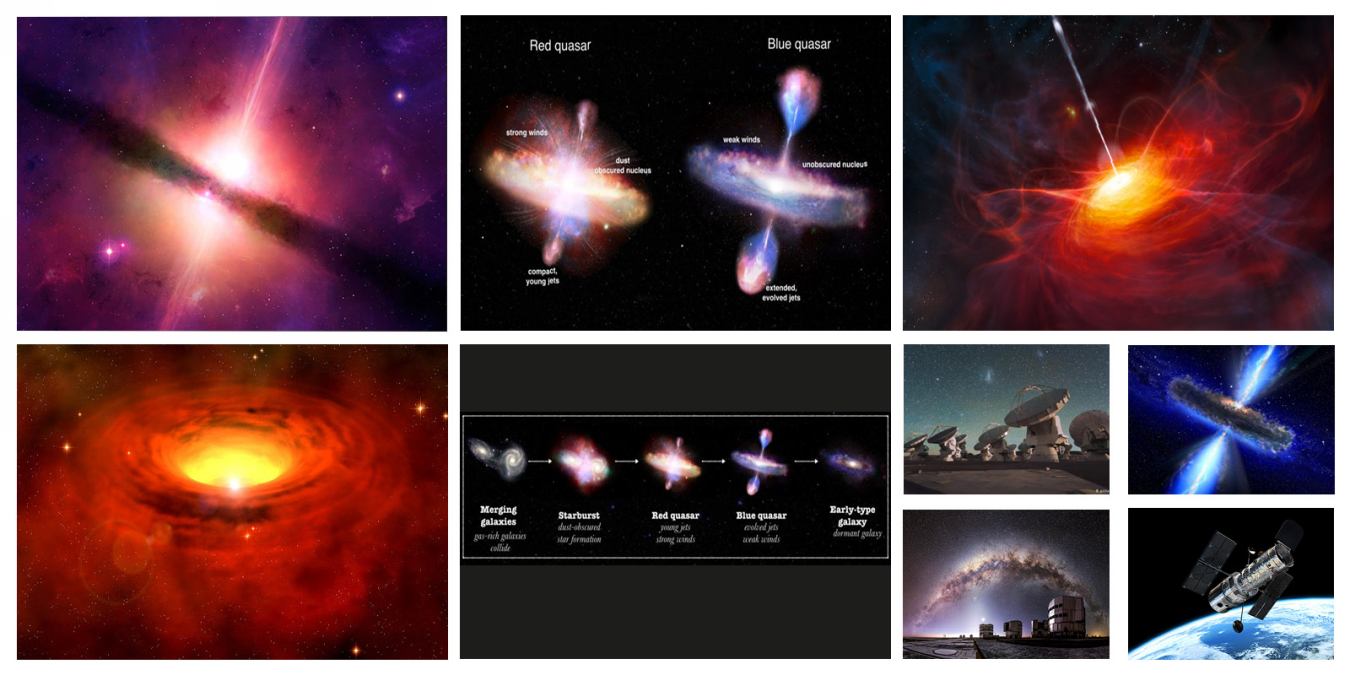
Quasars are the brightest known objects in the visible universe. They are so bright that they outshine the entire galaxy they sit in and are useful in all areas of astronomy, especially cosmology where they can be used as a probe for the early Universe. Most quasars appear very blue, but there are some that show much redder colours.
These “red quasars” could be an important link in galaxy evolution and so understanding their properties is very important; our group have found fundamental differences in the radio properties of red quasars that support this scenario.
In Victoria Fawcett’s work she uses high resolution radio data and optical-near-infra-red quasar spectra data from observatories/telescopes such as Atacama Large Millimeter/submillimeter Array (ALMA), Very Large Telescope (VLT) and the Hubble Space Telescope (HST) to explore the differences in red quasars; we find the red colours are caused by dust and that red quasars have a preference for compact radio morphologies.
These results add weight to the emerging picture of red quasars being fundamentally different objects to blue quasars, and potentially represent an important phase in galaxy evolution.
When Who Where
- Date: Sunday 15th August 2021,
- Time: 7pm.
- Speaker: Victoria Fawcett, Member of the Department of Physics, PHD Research Assistant, Durham University
- Venue: Via Zoom (If Pandemic Social Distancing Restrictions are in place, login details will be issued near the date of the talk).
Our speaker
Victoria Fawcett, Member of the Department of Physics, PHD Research Assistant, Durham University






